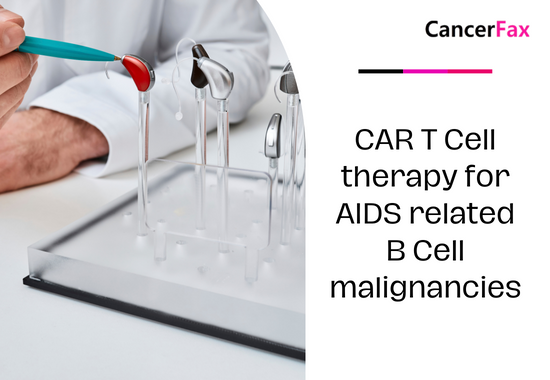Pancreatic cancer
Pancreatic cancer, also known as the king of cancer, is one of the common malignant tumors of the digestive system. In recent years, both developed and developing countries, the incidence and mortality of pancreatic cancer have shown an upward trend. Pancreatic cancer is a very malignant type of cancer with a very low survival rate.
Pancreatic cancer with high malignancy and poor prognosis
Surgical treatment may prolong the survival time. Although the main treatment for pancreatic cancer is still surgical resection, the 5-year survival rate of pancreatic cancer after surgery is the lowest among all gastrointestinal malignancies, less than 10%. Most patients who cannot undergo surgical resection die within six months, so the prognosis of pancreatic cancer is extremely poor.
For patients with pancreatic cancer who are unable to undergo surgery, receiving concurrent chemoradiation or chemotherapy is the main method of treatment, and concurrent chemoradiation is the most important treatment for patients with advanced pancreatic cancer. For unclean patients, simultaneous postoperative radiotherapy and chemotherapy can make up for the deficiencies of surgery. However, it is well known that no matter the radiotherapy or chemotherapy, the effects of side effects are a great burden on the body of cancer patients, and even more can not tolerate and give up treatment.
Proton therapy is the best candidate for pancreatic cancer
Since the birth of proton radiation therapy, it has been receiving industry attention for its high accuracy and protection of surrounding organs. With the increasing attention of proton radiotherapy, the use of proton radiation therapy for pancreatic cancer has also become an option for patients with pancreatic cancer One of the non-surgical treatment methods.
Although some pancreatic cancers can be well treated by surgery, chemotherapy and radiotherapy, because the organs near the pancreas-including the gastrointestinal tract, kidneys, and spine-cannot withstand high doses of radiation, traditional radiotherapy usually causes various problems Many patients suffer from many side effects and suffer miserably. Proton radiation therapy can concentrate most of the radiation at the tumor site, avoiding healthy tissue around the tumor, thereby reducing treatment-related side effects. At the same time, because the proton emits a high dose of radiation to the tumor site, it can kill cancer cells as much as possible.
Successful cases of proton therapy in patients with inoperable pancreatic cancer
Patient: Male, 51 years old
Chief complaint: vomiting with abdominal discomfort for more than half a year
History: Vomiting accompanied by abdominal distension and discomfort. The local hospital improved and relapsed after symptomatic treatment. A laparotomy was carried out in a hospital in the south. During the operation, a pancreatic hook protruded and a 4 * 3 * 3 cm mass was found. The intestinal artery was infiltrated around the mesenteric artery. Biopsy showed that metastatic adenocarcinoma
CT examination showed that the uncinate process of the pancreatic head was enlarged, the edges were irregular and rough, and the density was still uniform. The common bile duct was obviously compressed to the rear, which enhanced the dense blood vessels around the scan. Shadow, partly fused, lightly strengthened, water-like density shadows are seen in the peritoneal intestinal space, behind the stomach fundus, around the liver and spleen
Diagnosis and treatment: after admission, improve all auxiliary examinations, after definite diagnosis, perform proton radiation therapy, give pancreas + retroperitoneal lymph node lesions
DT: 48CGE / 12f
Treatment effect: Follow-up three years later, the patient’s ascites disappeared, the general condition is good, no obvious adverse reactions are seen; the tumor is significantly reduced and effectively controlled.
Image before proton therapy: the tumor is located next to the abdominal aorta with uneven density
The proton therapy dose distribution has obvious advantages, and it has a good protective effect on the spinal cord, kidneys and nearby normal tissues and organs
Proton therapy case analysis
Proton therapy has a very superior physical dose distribution. Different from traditional radiotherapy, proton therapy can form a “targeted blasting” high-dose area in the tumor area, and at the same time, the normal tissues around the tumor are not exposed to less or less radiation, so it can reduce the effects of radiotherapy or combined chemotherapy and radiotherapy The early and late side effects of the gastrointestinal tract, liver, kidney and spinal cord can increase the tumor radiation dose to achieve a higher tumor control rate.
For which tumors is proton therapy suitable for?
The application of proton therapy is very wide. In addition to pancreatic cancer, proton therapy has a good effect on common cancers such as liver cancer, lung cancer, prostate cancer, breast cancer, and ovarian cancer. Nasopharyngeal cancer, eye tumors), pediatric tumors and other effects are better. Proton therapy is especially sensitive to the treatment of cancer in children and adolescents, and can effectively improve the quality of life and survival of children after treatment. The side effects are extremely small, which can effectively prevent the growth and development of children from being harmed by cancer treatment.
How can cancer patients take proton therapy?
The content of this public account is only for communication and reference, not as a basis for diagnosis and medical treatment, and all consequences caused by actions made in accordance with this article are the sole responsibility of the actor. For professional medical questions, please consult a professional or professional medical institution.

